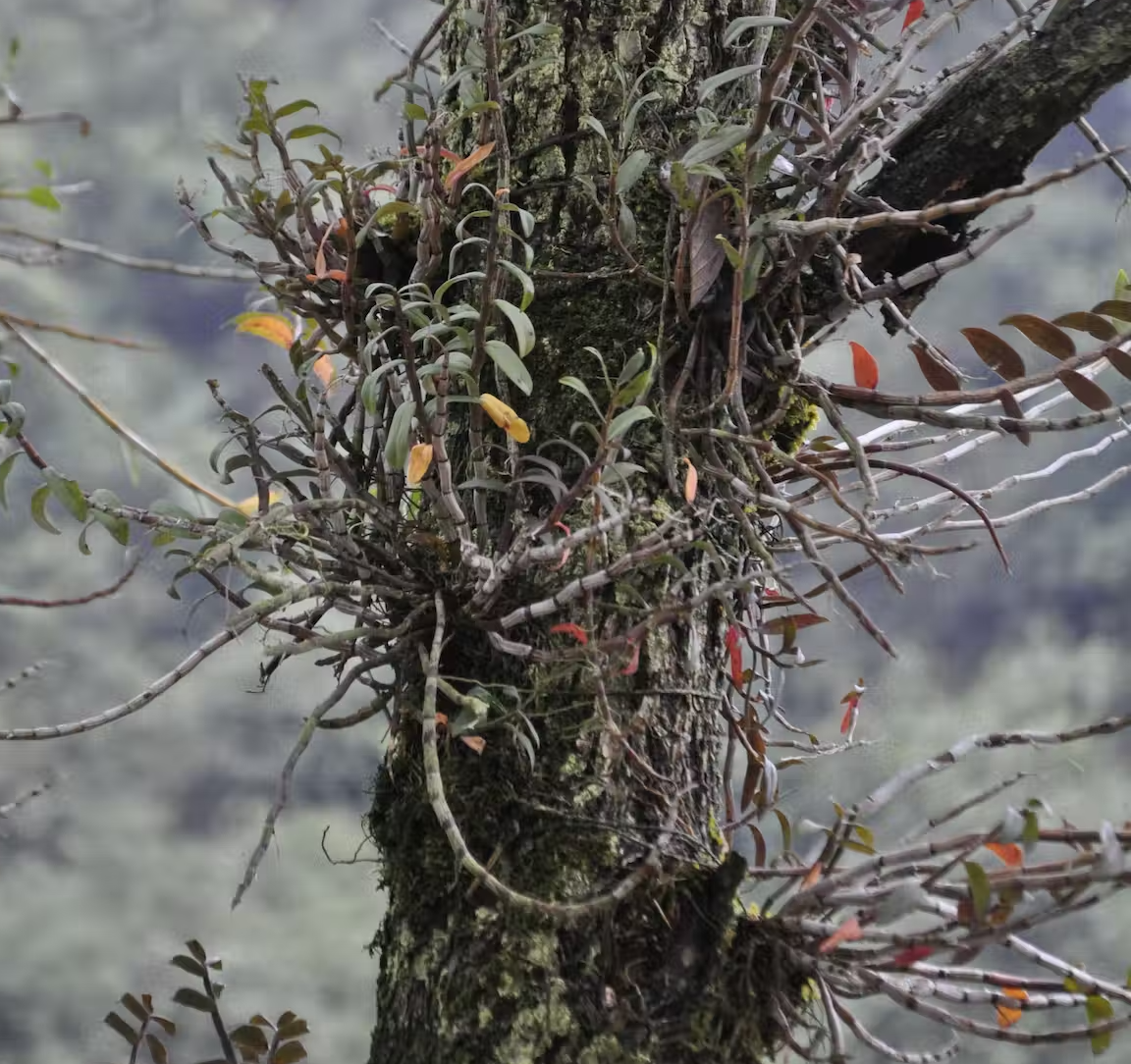China is well known for its medicinal use of wild plants, a tradition that dates back thousands of years. These traditional Chinese medicines include many wild orchids, some quite showy.
Typically, orchids are consumed alone or mixed with other herbs in tea or soup. The health benefits vary depending on species; conditions for which orchids are used include immune system boosting, hypertension and stroke.
Many of these medicinal orchids are among the 40-plus species in the genus Dendrobium. In recent decades, supplies of wild-sourced medicinal Dendrobium orchids have declined steadily, with shortages of some types. This is occurring in the limestone regions of Guizhou and Guangxi, the main area where Dendrobium has grown naturally, due to a combination of overharvesting by collectors and habitat loss.
I am an ecologist and lead several research projects in southwestern China, where the nation’s first orchid nature preserve is in a zone with a highly diverse assortment of orchid species. In 2017, China released a Biodiversity Red List of endangered species found within its borders. It included 68 threatened Dendrobium species but did not mention overharvesting as a factor for their decline, even though I and other researchers have shown that trade in wild-harvested orchids is very active in China.
Many herbs used in traditional Chinese medicine are hand-picked by people in remote places.
In my view, China’s Biodiversity Red List significantly underestimates wild harvest as a threat to Chinese orchids. The government has taken encouraging steps on this issue recently, but its actions reflect challenges that are relevant to conserving many wild species, such as balancing use and conservation. The fate of China’s Dendrobium orchids thus offers clues about what China is prepared to do to conserve its many endangered plants and animals.
From forests to cities
Farmers typically collect wild medicinal orchids to sell to middlemen or in rural markets. From there, the plants often move to bigger medicinal plant trading hubs or flower-and-bird markets in major Chinese cities.

A semi-wild Dendrobium orchid growing on a tree in China’s Guangdong province. Hong Liu, CC BY-ND
The total trade volumes of medicinal orchids are not well documented, but likely vary by species. Available records showed that medicinal Dendrobium species trade peaked in the late 1980s at about 660 short tons (600 metric tons) yearly. More recent evidence suggests that wild medicinal Dendrobium are being traded across borders between China and southeast Asian countries, probably because the plants’ populations are dwindling in China.
Industrial cultivation
Although China faces many well-known sustainability challenges, it is working to position itself as an environmental leader. This is especially true for protecting wild species: In 2019, China sought and won the role of host for the planned 2021 Conference of Parties to the U.N. Convention on Biodiversity. That meeting, originally in the Chinese city of Kunming, was held in Montreal in late 2022 after several COVID-19 delays.
Actions on orchid conservation reflect this push. On Sept. 7, 2021, China released a revised list of National Key Protected Wild Plants (Chinese), which included about 1,100 species. The new list added 291 Chinese orchid species, in sharp contrast to the preceding version, which did not protect any orchids.
All 96 species of Chinese Dendrobium are on the list, which means that collecting them is subject to national regulations on wild plant protection. It remains to be seen how effectively these regulations will be enforced.
On Sept. 7, 2021, China released a revised list of National Key Protected Wild Plants, which included about 1,100 species.
China also has encouraged production of commercially valuable animals and plants on farms to meet market demand and reduce pressure on wild species. For orchids and many other species, this strategy has produced mixed results.
Growers are now cultivating Dendrobium orchids, including Tie Pi Shi Hu (D. catenatum), one of four "fairy herbs" that are documented in ancient herbal books. This process is mostly done in industrial greenhouses. In 2020, China produced 33,000 short tons (30,000 metric tons) of Dendrobium orchids (Chinese), with an estimated market value of about $US1.7 billion.
This output has only partly satisfied market demand, and orchid consumers view cultivated orchids as an inferior option. As a result, these plants command a much lower market price than their wild counterparts.
Gastrodia elata, a threatened orchid used in traditional Chinese medicine, is a good example. Mass artificial cultivation techniques for this species were developed as early as the 1980s, but have not ended wild collection.
Forest-grown orchids
One alternative would be to ban use of these threatened orchids. But usage bans on other wild species have produced mixed results. Depending on factors such as market demand and species biology, bans may not be necessary or desirable.
It has been more productive for China to supplement mass orchid cultivation by raising high-value medicinal and edible plants under the canopy of well-managed native forests.
Read More

